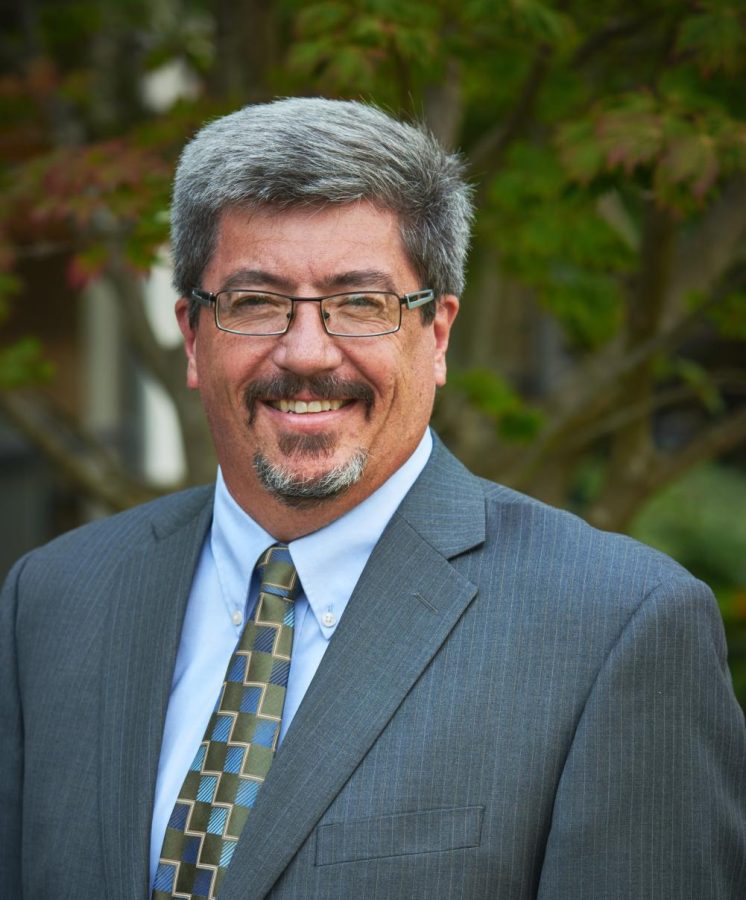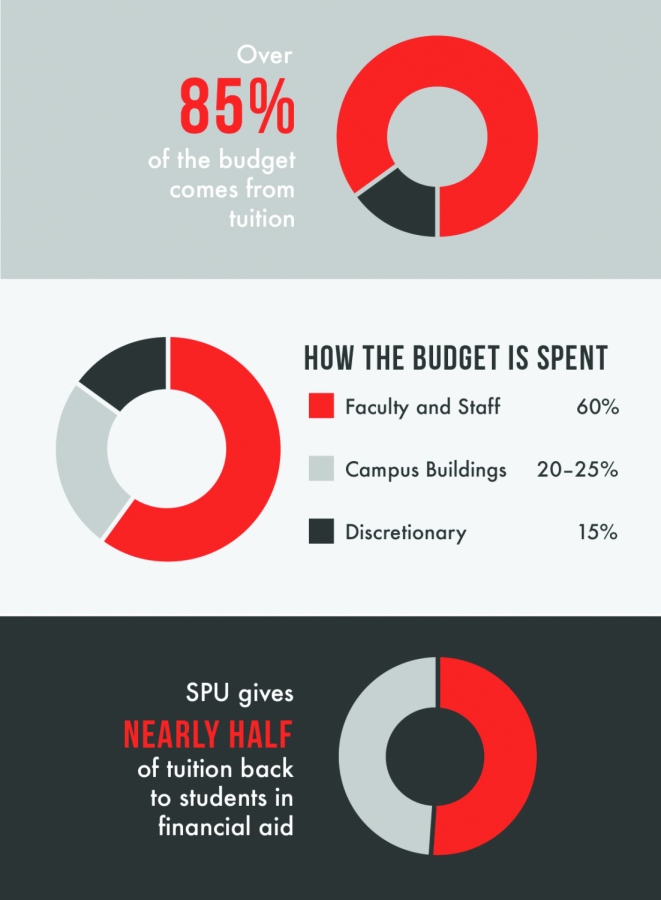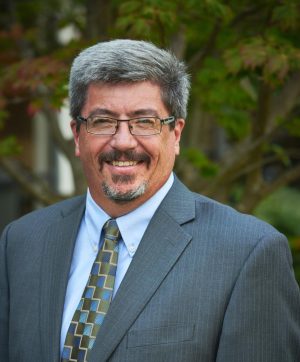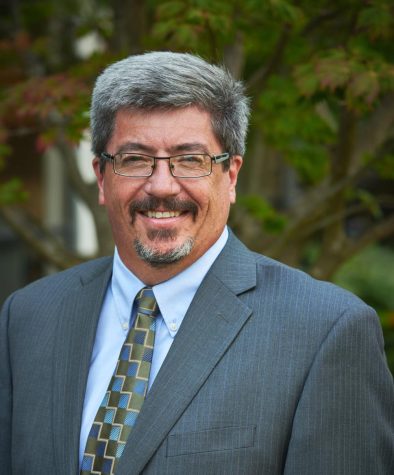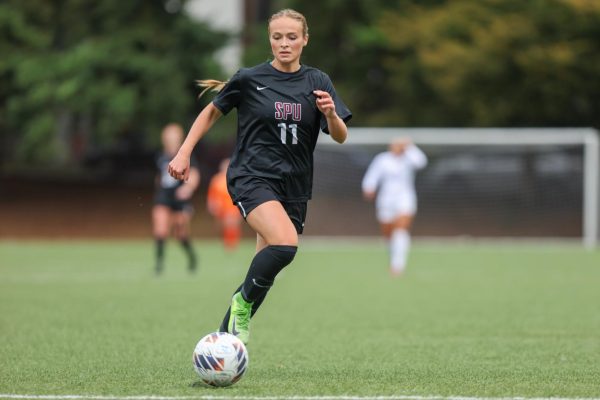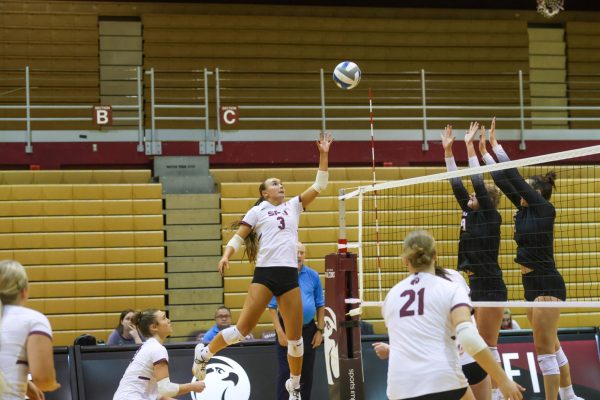Dropping enrollment, increased retention
State of university budget is not as dire as predicted
November 6, 2019
Seattle Pacific University’s finance administrators have established the budget for the year and they are eager to explain how it works and how it will impact campus.
This year, enrollment has gone down while retention of students has gone up, and state-aid for students has increased in both dollar amount and student quantity. All of these factors, and more, affect the year’s budget.
Craig Kispert, vice president for finance and business affairs at SPU, and Nate Mouttet, vice president for enrollment management and marketing, unpacked the complexities of the budget.
In terms of numbers, Kispert specified exactly where SPU’s money goes.
First, he clarified that over 85% of the total revenue of the university comes from tuition.
“So, when it comes to expenses and the personal nature of the work that we’re doing and how we try to deliver education on campus, it all goes [from] one place and that’s tuition,” he said.
Sixty percent of the total budget pays for faculty and staff, Kispert explained. Another 20-25% goes to all the buildings on campus, “to pay for heating, cooling, lights, utilities, new roofs, all that.” The final 15% is left as “discretionary.” Kispert specified that this money typically goes towards conferences, pens and paper, and other such expenses.
Due to how much of the budget pays for faculty and staff members, Kispert said that changes or adjustments to the budget are especially challenging.
“Unfortunately in our scenario, if you want to make an adjustment it usually involves people, because how much is in the budget,” he said.
One significant factor in the planning of the budget is the enrollment statistics for the year, and this year those have been particularly complicated.
“It’s a little bit of a mixed bag,” Mouttet explained about this academic year. “It’s lower on the student count than we were anticipating … because the year before had been, quite candidly, a very positive year.”
“On the returning students side, where it’s a mixed bag is … it was actually a better outcome than what we had originally projected,” he continued.
He said that, while enrollment is down, it is not as significant a loss financially as the finance team had been expecting. It could certainly have been worse, and the team was preparing for as much over the summer, but they found that it was a more mixed result.
Moutett emphasized that, while drops in overall enrollment do make budgeting more challenging, an increase in retention means SPU is doing something right.
Moutett cited programs like Early Connections, Ascent and BioCORE as likely increasing retention by creating community and connection.
“If you’re a faculty member and you’re doing things that are trying to help a student succeed and wondering if it’s worth it … it actually is impactful,” Moutett said.
Enrollment and state financial aid go hand-in-hand, and this has been an eventful year for that as well, according to Mouttet. Recent legislature has increased Washington State financial aid for college students.
“State aid for students was also greater than it has been in previous years, so more students who needed financial help were able to get it from the state and not from SPU,” he said, meaning that SPU allocated less money for aid.
Mouttet said that SPU gives nearly half of it’s tuition cost back in financial aid to students every year, which is drawn from tuition revenue and a small number of other endowments.
Kispert’s team factors in all of this information, from aid to tuition revenue, to the programs encouraging retention, in deciding on the year’s official budget.
“Broadly speaking, for our budget planning process, the calendar typically starts in late December and runs through with the idea the budget put in place for the board to approve in February,” he explained.
Kispert emphasized that the two groups that help make budget decisions are a group of faculty and students.
The Faculty Stewardship and Budget Committee is tasked with walking through the budget model with Kispert and his team.
The Student Budget Committee is made up of Liam Smith, ASSP VP of finance, Nathan Samayo, ASSP president, Nate Canny, executive VP, two unnamed senators yet to be announced, and one other student.
“SBC primarily serves as a liaison for students and ASSP Senate to participate in the process of adopting the University Budget,” Smith said.
Kispert strongly encourages students to get engaged with those members of ASSP and give their input. In the past, Student Budget Committee has brought issues like multicultural programs, student housing pricing and mental health services to Kispert’s attention.
“The primary work for students is to get engaged and find out who all these student budget committee members are and ask questions of them,” he said.
This year’s budget has once again balanced out, and SPU’s finance team is confident in its choices for this year even as the many contributing factors constantly fluctuate. In only a month or so, they will begin to analyze and plan what they will bring to the board for approval regarding next year’s budget.

